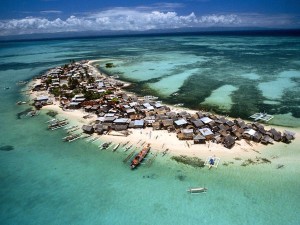 Philippines Population 2013
Philippines Population 2013
The current population of the Republic of the Philippines is estimated to be approximately 97.704 million people, which is an increase of 3.0% from the last record of the population. Historically, the population of the Philippines had been less than the population of the population of Vietnam. However, at the turn of the century, the populations of the two countries overlapped and then the population of the Philippines became greater. Based on the total land area and the total population of the country, the population density is estimated to be about 797.2 people per square mile.
Ethnic Groups of the Philippines
The largest ethnic group in the country of the Philippines is the Visayan ethnic group. The next largest group is the Tagalog ethnic group. The rest of the population is made up of many minority groups and indigenous populations. The culture and population is a very diverse population made up of different cultures and peoples. The official language of the country is Filipino and English based on the Constitution written in 1987. Filipino is a standardized version of the native languages of the land, especially Tagalog.
Religion in the Philippines
The Republic of the Philippines, because it is a secular country, does not have an official religion due to the separation of church and state. However, the country is predominantly Catholic, making up about 81% of the population. The Catholic and Christian influence of the country comes as a result of the large Spanish influence historically. The other Christian denominations make up only 4.5% of the country. There is also a Muslim population, making up 5% of the total country’s population.
Sports in the Philippines
The most popular sport among the population of the Republic of the Philippines is basketball. There are both amateur and professional leagues for basketball in the country. Similar to the United States, the Philippine Basketball Association is the main organization of basketball. People also enjoy to wakeboard, play beach volleyball, and mountain climb.
Food in the Philippines
Food in the Philippines also relies heavily on ingredients used by the islands’ original inhabitants, the Malays, including coconut, hot chilies and mango. Early Chinese colonists introduced pansit noodles and bean curds to the islands, which are still widely served across the Philippines today. Much like their mainland Asian counterparts, Filipinos use rice as a foundation for most dishes. Several different varieties of rice are used in Filipino cooking and often molded into fried cakes and rice noodles, which are widely served in restaurants and roadside stands. Fresh seafood is another staple of Filipino cooking, and both fish and shellfish have long been a mainstay on tables across the nation. Likewise, vegetables are a major part of many recipes, and are generally used more often than meat, which is more expensive. Coconut milk is a natural Filipino ingredient used to cook meat and veggie dishes called guinatan.
Philippines Climate
Because of the geographical location on the planet, the Philippines has a “Tropical Rainforest Climate” all over the country. Though some rainfall can be expected in every month, the rainfall differs greatly through the year. The influence of the southwest monsoon is very clear. In the period December - May there is no monsoon anymore. The wind, the “trade wind”, is coming from the northeast and brings hardly rainfall.
CNN Population in the Philippines
Historical Population of the Philippines
The population of the Republic of the Philippines has historically increased over the last half of a century. In fact, the population growth rate seemed to increase over the latter end of the 20th century into the entrance of the 21st century.
| Year | Population (millions) |
| 1960 | 26.01 |
| 1965 | 30.61 |
| 1970 | 35.45 |
| 1975 | 40.89 |
| 1980 | 47.06 |
| 1985 | 54.05 |
| 1990 | 61.63 |
| 1995 | 69.26 |
| 2000 | 77.31 |
| 2005 | 85.55 |
| 2010 | 93.26 |
| 2011 | 94.85 |
Projected Population of the Philippines
The population of the Republic of the Philippines is projected to continue its trend of sharp increase over the next 37 years. The birth rates are expected to range from about 24.5 births per 1000 people to about 16 births per 1000 people. In contrast to this, the death rates are expected to only range from about 5.8 deaths per 1000 people to about 7 deaths per 1000 people. There is also expected to be a negative net migration rate over these years.
| Year | Population (millions) | Percent Increase |
| 2015 | 101.379 | 3.5% |
| 2020 | 109.649 | 8.2% |
| 2025 | 117.908 | 7.5% |
| 2030 | 125.990 | 6.9% |
| 2035 | 133.652 | 6.1% |
| 2040 | 140.815 | 5.4% |
| 2045 | 147.445 | 4.7% |
| 2050 | 153.485 | 4.1% |


